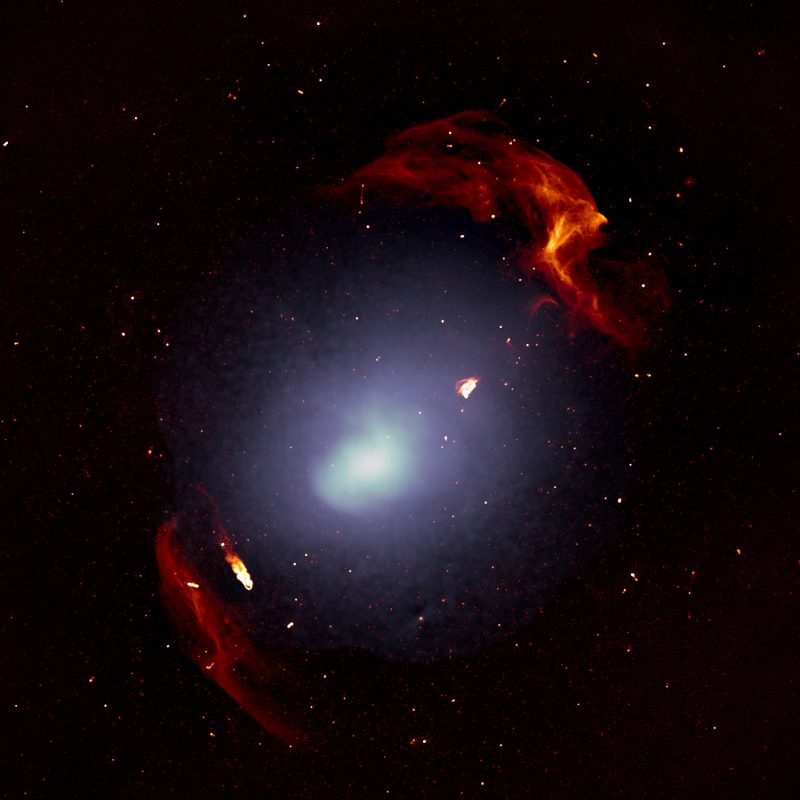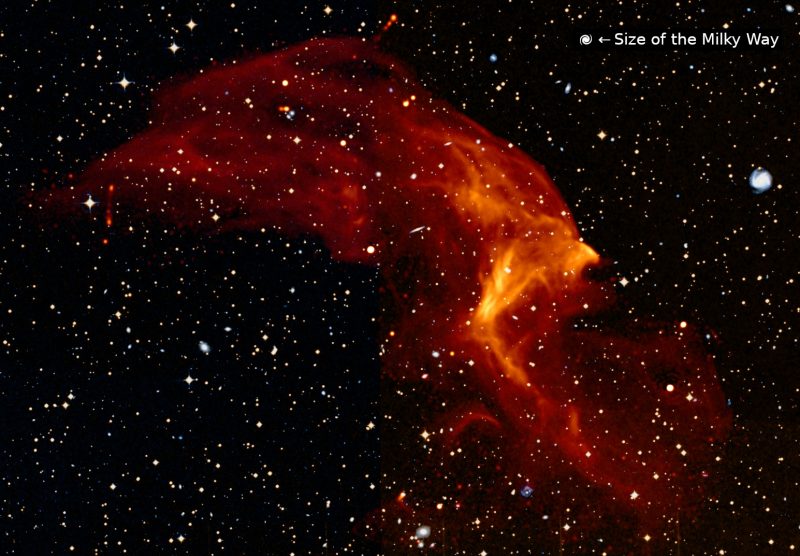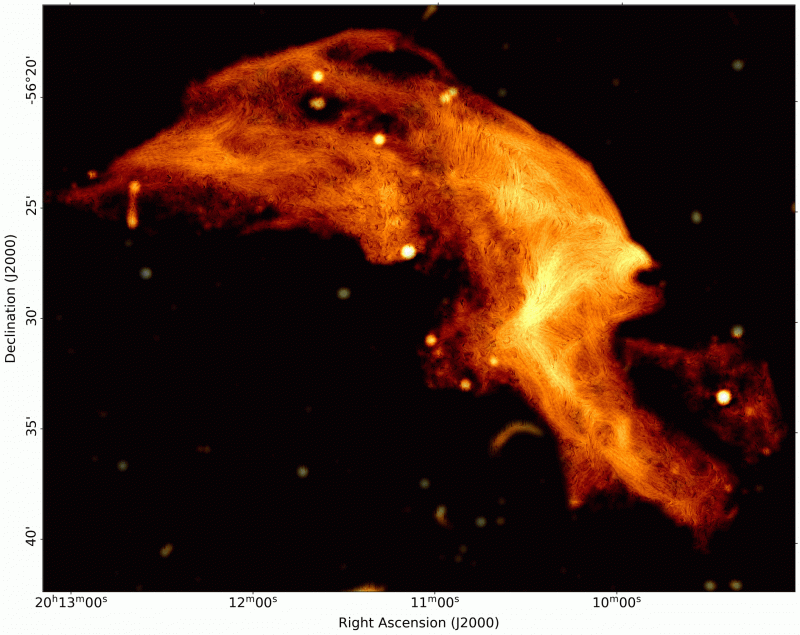
Astronomers said in late February, 2022, that they’ve obtained the most detailed view yet of a shock wave that extends across 6.5 million light-years of space. You’d need 60 Milky Way galaxies end-to-end – each one filled with hundreds of billions of stars – to equal the extent of these shock waves. The shock waves are on each side of the galaxy cluster Abell 3667, which lies more than 700 million light-years away from us. When the galaxy clusters that created this cluster collided, it produced the shock waves. The astronomers said it’s one of the most energetic events that’s taken place in our universe since the Big Bang. Wow!
The international team of scientists published their study on January 31, 2022, in the peer-reviewed journal Astronomy and Astrophysics.
The 2022 lunar calendars are still available. Order yours before they’re gone!
Galaxy cluster Abell 3667
This massive event involved two separate galaxy clusters that joined to form Abell 3667. The clusters collided more than a billion years ago. The scientists used the MeerKAT radio telescope in South Africa to get a better view of the galaxy cluster and its shock waves. Alexis Finoguenov of the University of Helsinki, who participated in the study, said:
The presence of the shocks in Abell 3667 is detected using sharp changes in the properties of the hot gas, traced by its X-ray emission.
Lead author Francesco de Gasperin of the University of Hamburg and INAF said:
These structures are full of surprises and much more complex than what we initially thought.

Seeing magnetic fields in the shock wave
The radio wave data allows scientists to see how the particles move across the magnetic fields. The scientists can thus trace the magnetic field lines, which are the regions where particles are excited to high speeds. De Gasperin said:
The shock waves act as giant particle accelerators that accelerate electrons to speeds close to the speed of light. When these fast electrons cross a magnetic field, they emit the radio waves that we see. The shocks are threaded by an intricate pattern of bright filaments that trace the location of giant magnetic field lines and the regions where electrons are accelerated.
The shock wave races across the galaxy cluster at speeds of 3.3 million miles an hour (1,500 km/s). Or, as the press release said:
This means that the shock front would cross the entire Earth in the time needed to read this sentence.

Bottom line: A team of international astronomers have gotten the best look yet at a shock wave from galaxy clusters colliding to form Abell 3667.











